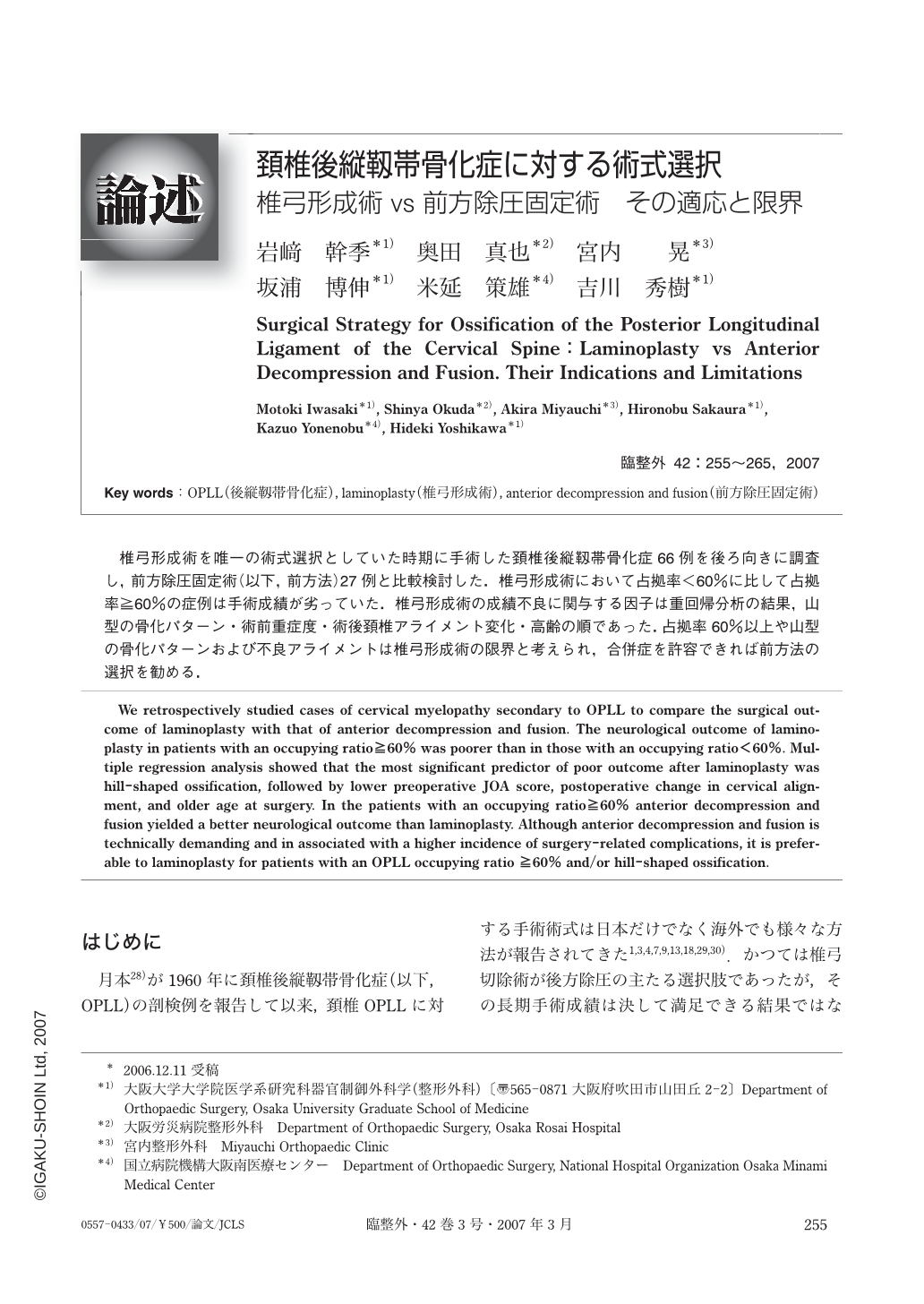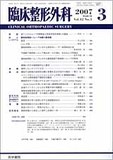Japanese
English
- 有料閲覧
- Abstract 文献概要
- 1ページ目 Look Inside
- 参考文献 Reference
椎弓形成術を唯一の術式選択としていた時期に手術した頚椎後縦靱帯骨化症66例を後ろ向きに調査し,前方除圧固定術(以下,前方法)27例と比較検討した.椎弓形成術において占拠率<60%に比して占拠率≧60%の症例は手術成績が劣っていた.椎弓形成術の成績不良に関与する因子は重回帰分析の結果,山型の骨化パターン・術前重症度・術後頚椎アライメント変化・高齢の順であった.占拠率60%以上や山型の骨化パターンおよび不良アライメントは椎弓形成術の限界と考えられ,合併症を許容できれば前方法の選択を勧める.
We retrospectively studied cases of cervical myelopathy secondary to OPLL to compare the surgical outcome of laminoplasty with that of anterior decompression and fusion. The neurological outcome of laminoplasty in patients with an occupying ratio≧60% was poorer than in those with an occupying ratio<60%. Multiple regression analysis showed that the most significant predictor of poor outcome after laminoplasty was hill-shaped ossification, followed by lower preoperative JOA score, postoperative change in cervical alignment, and older age at surgery. In the patients with an occupying ratio≧60% anterior decompression and fusion yielded a better neurological outcome than laminoplasty. Although anterior decompression and fusion is technically demanding and in associated with a higher incidence of surgery-related complications, it is preferable to laminoplasty for patients with an OPLL occupying ratio ≧60% and/or hill-shaped ossification.

Copyright © 2007, Igaku-Shoin Ltd. All rights reserved.


